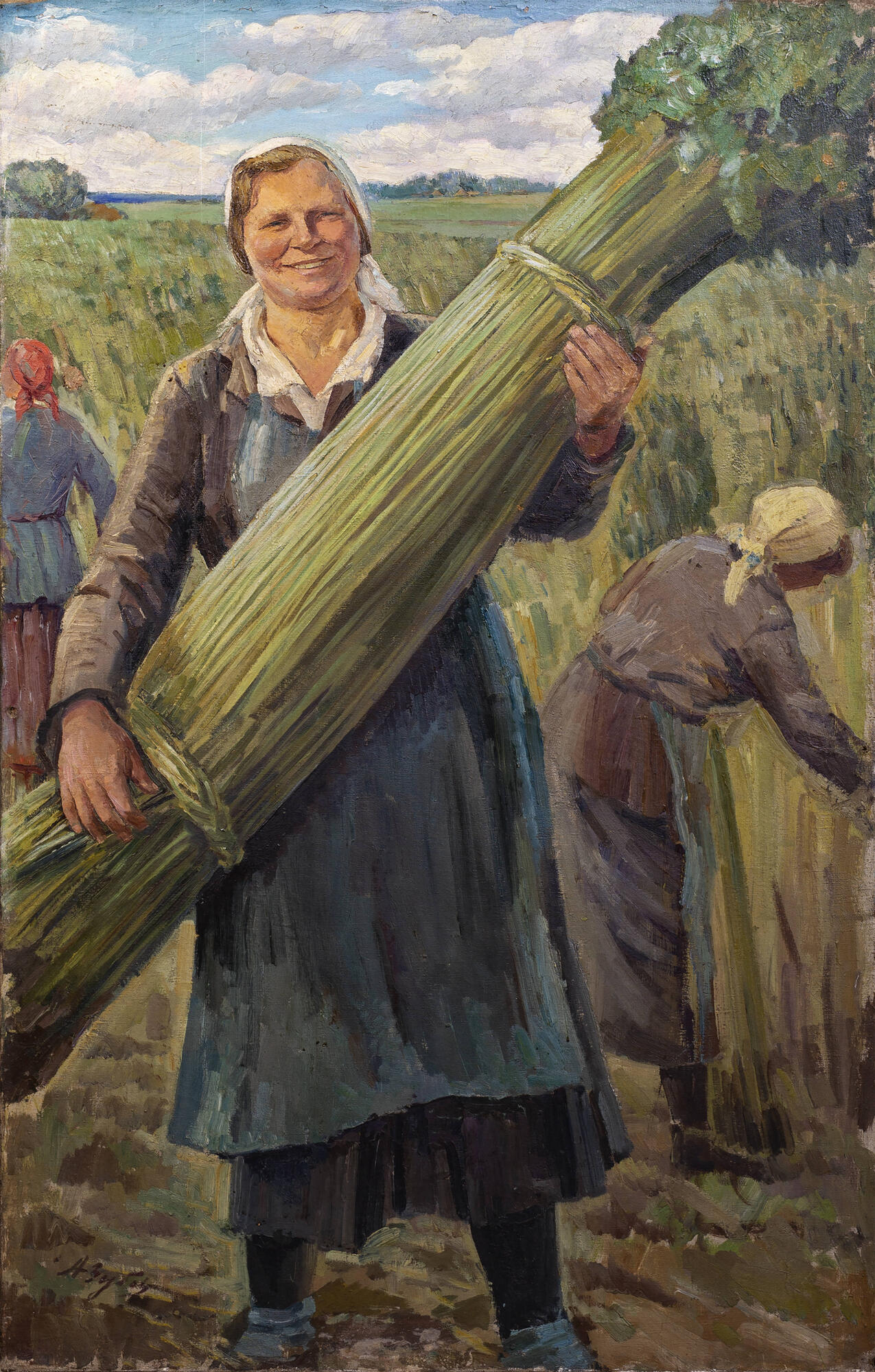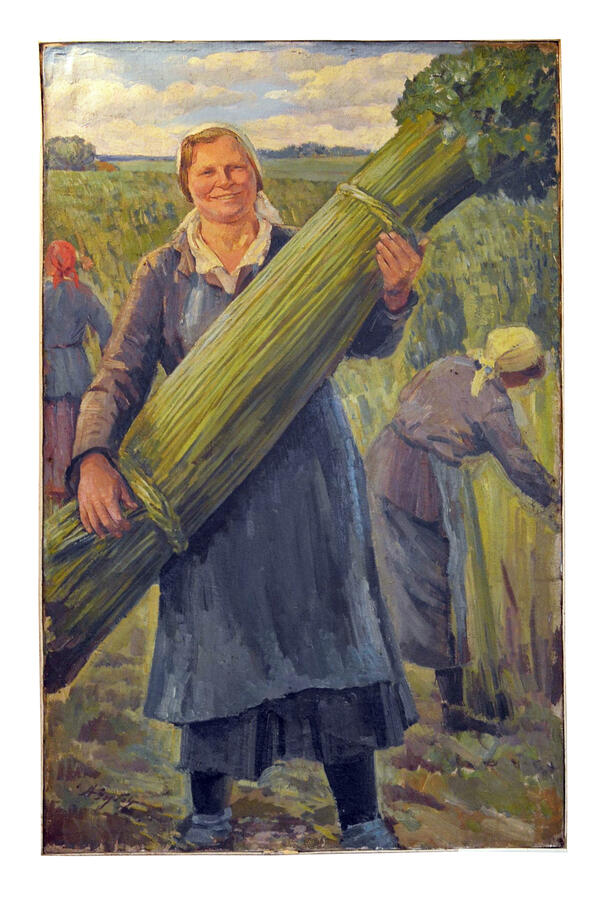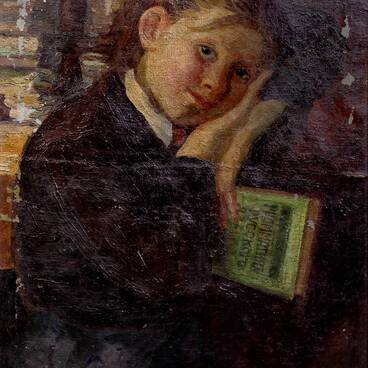Anton Mikhailovich Zubov — the artist who painted the picture — was born in Stary Oskol in 1907. He went to study at Leningrad Higher Art and Technical Institute (VHUTEIN) on recommendation of the Kursk provincial Komsomol committee in 1925. His tutors at the Institute were the artists K. S. Petrov-Vodkin, V. E. Savinsky, A. A. Rylov. The artist participated in various exhibitions in Leningrad, Dnepropetrovsk, Voronezh, Kursk, Stary Oskol.
In December 1935, Anton became the chairman of the Kursk branch of the Union of Artists, the founder of the Kursk Regional Picture Gallery and the art studio for young artists affiliated to it. In pre-war years, on Zubov’s initiative a number of exhibitions of local painters, sculptors and graphic artists were held in Kursk. Three of them were visited by the artist Konstantin Yuon, who not only spoke highly of the paintings of Zubov, but also noted his tremendous energy in organizing the local branch of the Union of Artists. In 1936, the artist had a large personal exhibition of watercolors and drawings, which showed 120 of his works. Zubov worked both in the genre of landscapes, particularly industrial, as well as in the genre of portraits.
The painting “Stakhanovite Taisiya Sechenova” is a life-size portrait in oil on canvas. The painting depicts the harvesting of hemp. The title character is in the foreground, full-length. Her face and hands are painted in detail. The horizon line is marked by the edge of the field and the uneven line of the forest belt. The picture is painted with the combination of smooth volumetric impasto technique, the strokes are wide, medium and long.
In the Soviet Union, the cultivation of hemp was of great importance in agriculture and industry. The Soviet Union continued the tradition of early 20th century Russia in the cultivation of this crop. In 1913 the area under hemp cultivation was 645 thousand ha. In 1932 the area sown with it was already 953 thousand hectares. In the Soviet Union the area under hemp cultivation accounted for 70% of global area under this crop. Winter rye, oats, millet, barley, buckwheat, and very little wheat were sown in Starooskolsky region. Among the industrial crops sugar beet, hemp, fodder grasses played an important role in agriculture. Hemp accounted for 80% of the land used for industrial crops. It provided abundant raw material for spinning and weaving.
In December 1935, Anton became the chairman of the Kursk branch of the Union of Artists, the founder of the Kursk Regional Picture Gallery and the art studio for young artists affiliated to it. In pre-war years, on Zubov’s initiative a number of exhibitions of local painters, sculptors and graphic artists were held in Kursk. Three of them were visited by the artist Konstantin Yuon, who not only spoke highly of the paintings of Zubov, but also noted his tremendous energy in organizing the local branch of the Union of Artists. In 1936, the artist had a large personal exhibition of watercolors and drawings, which showed 120 of his works. Zubov worked both in the genre of landscapes, particularly industrial, as well as in the genre of portraits.
The painting “Stakhanovite Taisiya Sechenova” is a life-size portrait in oil on canvas. The painting depicts the harvesting of hemp. The title character is in the foreground, full-length. Her face and hands are painted in detail. The horizon line is marked by the edge of the field and the uneven line of the forest belt. The picture is painted with the combination of smooth volumetric impasto technique, the strokes are wide, medium and long.
In the Soviet Union, the cultivation of hemp was of great importance in agriculture and industry. The Soviet Union continued the tradition of early 20th century Russia in the cultivation of this crop. In 1913 the area under hemp cultivation was 645 thousand ha. In 1932 the area sown with it was already 953 thousand hectares. In the Soviet Union the area under hemp cultivation accounted for 70% of global area under this crop. Winter rye, oats, millet, barley, buckwheat, and very little wheat were sown in Starooskolsky region. Among the industrial crops sugar beet, hemp, fodder grasses played an important role in agriculture. Hemp accounted for 80% of the land used for industrial crops. It provided abundant raw material for spinning and weaving.




